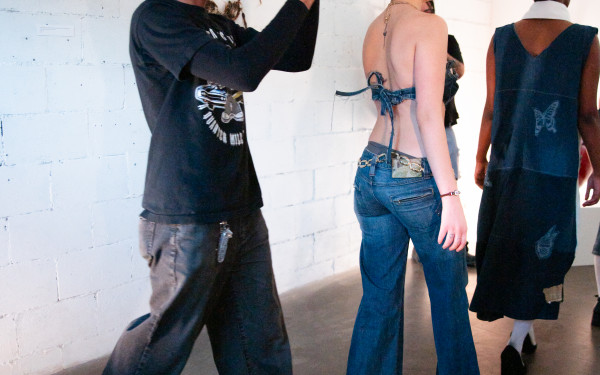The deceptive nature of the quiet luxury aesthetic
Quiet luxury is rather loud if you listen closely enough
In an era where consumerist and maximalist self-expression are celebrated, the emergence of the quiet luxury aesthetic marks a cultural shift.
Characterized by premium fabrics, excellent craftsmanship and muted colours, quiet luxury embraces a more refined and exclusive form of affluence. This aesthetic is the antithesis of the overt logomania of the 2010s, which signals a change from the conspicuous consumption that once defined wealth. However, in an attempt to signify effortless sophistication, it inadvertently functions as an exclusionary and performative expression of wealth.
Despite its newfound popularity, “quiet luxury” is not a new concept. It has long been embraced by upper-class elites who come from generational affluence and favour subtlety over flashy displays of wealth. Obvious branding often appears vulgar and tasteless, signaling a “new money” social class. Overt logos convey a sense of excessive effort, which signals underlying insecurities surrounding economic status. In the realm of high society, brands like Loro Piana and The Row are favoured because they have built their exclusive reputations on fine cashmere, neutral tones and exquisite craftsmanship. Contrastingly, fast-fashion companies like PrettyLittleThing are undergoing complete rebrands to fit into this image of elite society. However, consumers question the authenticity of such changes, as quality materials and craftsmanship are often compromised in favour of replicating style through mass production.
In an age where fashion trends are hyper-visible and instantly commodified through social media, true exclusivity lies in garments that cannot be easily identified or purchased. The exclusivity of the aesthetic simply refers to an increasing divide in social and class status. While fast fashion allows consumers to access trends quickly, true luxury now lies in a space of coded elitism. It refers to the subtle, unspoken ways that social class and exclusivity are maintained through fashion. Coded elitism relies on the notion that true luxury is effortless rather than deliberately constructed. For example, a well-tailored, $5,000 coat from The Row may not be an outward expression of luxury, it functions as a signifier for generational wealth.
It is fundamentally exclusionary.
At its core, quiet luxury transmits the illusion of simplicity, perpetuating the idea that true style requires no external validation; the high-quality materials speak for themselves. The collective fascination with appearing wealthy and successful is due to the constant reinforcement of the hustle culture mentality.
Quiet luxury is rooted in privilege.
“Investment pieces,” like the aforementioned sweater, justify their price through their longevity and high-quality materials. However, most people cannot afford such pieces, as the majority of consumers rely on affordable, mass-produced fashion that only provides the look but not the quality or the affluence. Quiet luxury, therefore, is not only about good taste but also about having the means to opt out of trend cycles entirely.
The quiet luxury aesthetic also raises questions about sustainability and ethical production. As the fashion industry’s moral concerns grow, brands have positioned quiet luxury as a sustainable alternative to fast fashion. However, the rhetoric of “sustainability” often serves as a disguise, as many of the brands associated with quiet luxury actively participate in exploitative labour practices and unethical sourcing of raw materials. The aesthetic, therefore, does not inherently represent sustainable consumption; it only markets itself as so.
Ultimately, quiet luxury is merely a fleeting trend that maintains the exclusivity of wealth while disguising it as modesty, thus offering an illusion of accessibility while remaining financially unattainable for most. In doing so, this trend continues to reinforce class distinctions, demonstrating that luxury, no matter how inconspicuous, derives its worth from visibility.
This article originally appeared in Volume 45, Issue 12, published April 1, 2025.


_600_832_s.png)


_1_600_375_90_s_c1.jpg)

